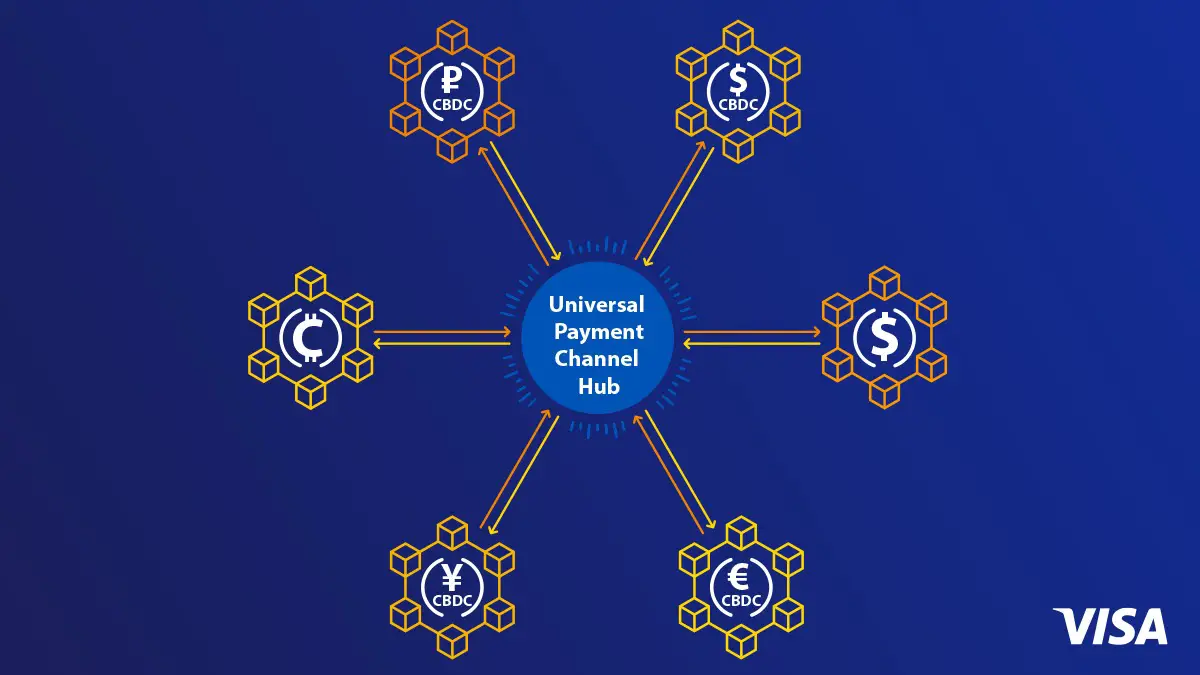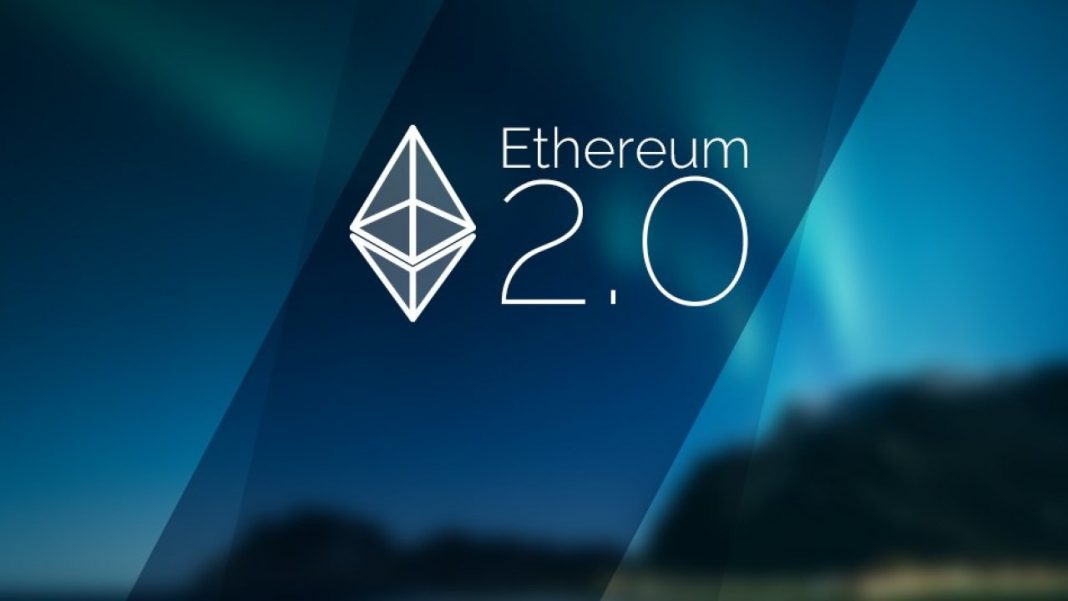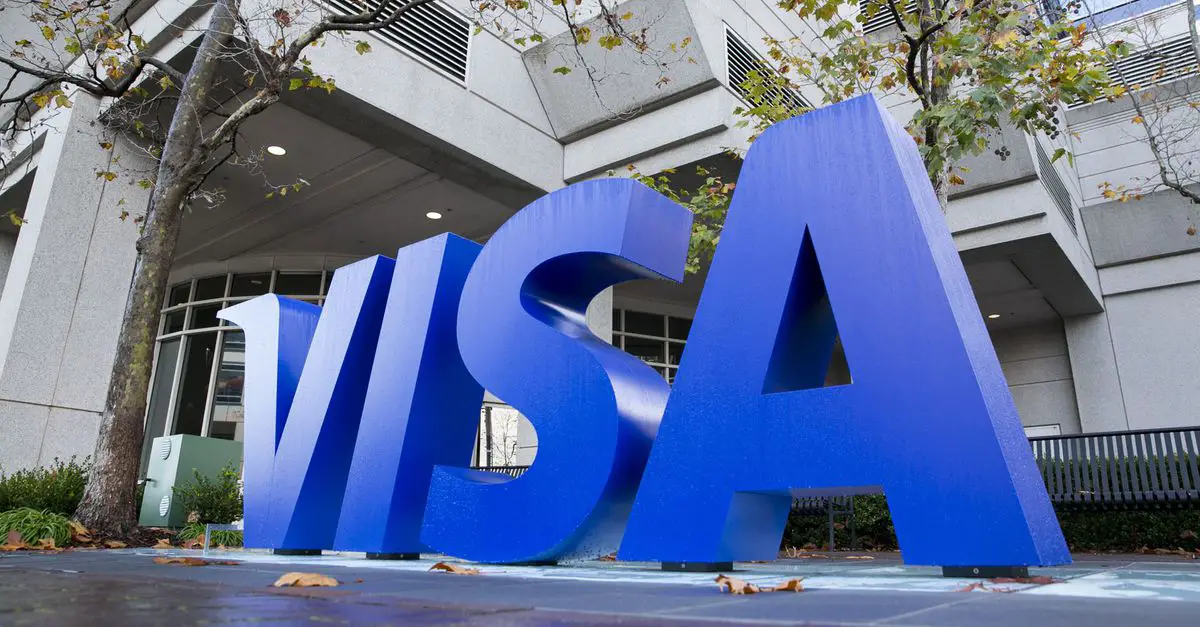Ethereum is getting bigger and bigger, Visa, the world’s largest payment processor, announced on September 30 that it is developing the “Universal Payments Channels” for Ethereum and has deployed a concept contract on the Ethereum Ropsten testnet, according to a press release titled “Making digital currency interoperable.” This will allow users to send digital assets across different blockchains.
Visa is working on Universal Payments Channels to enable cross-chain crypto payments
Because central banks around the world are moving towards Central Bank Digital Currency (CBDCs) initiative (simply known as putting FIAT on blockchain). The interoperability will become a major problem because every service provider would have to interact with users paying in various CBDCs. Visa will be there to fill the gap.
The press release defines the Universal Payments Channel concept as “Visa’s research and product teams have developed a new concept to move the conversation forward. We’re calling it a “Universal Payment Channel” (UPC) and it acts like a hub, interconnecting multiple blockchain networks and allowing for secure transfer of digital currencies. Think of it as a “universal adapter” among blockchains, allowing central banks, businesses, and consumers to seamlessly exchange value, no matter the form factor of the currency”

Visa is preparing for a future in which different currencies on several blockchains would be used by various individuals who will transact with one another. In this situation, it would be vital to provide compatibility and cross conversions. Visa is once again stepping up to the plate and is highly probable to utilize Ethereum as the basis of operation for its L2 solutions. The Universal Payments Channel began development in 2018, and Visa rolled out the concept contract on the Ropsten testnet not far ago.
On September 24, the contract 0xADb1F7e78a3Ac3D0A006961f95D96BBB0eC14326 was deployed on Ethereum’s Ropsten network, according to this transaction. The document also contains provisions for opening, closing, the timing of validity, dispute resolution, and USDC stable coin utilization. The current design of the system is likely to be further developed after testing and before it is integrated into the Ethereum base layer. Things are progressing in the right direction, and much value will be created for ETH holders in the future, especially with EIP1559 deployment and the forthcoming transition to Ethereum 2.0.
What is Central Bank Digital Currency (CBDC)?
These digital currencies are a new concept, and they may be compared to “FIAT but on blockchain,” which are issued and administered by central banks. They’d be regulated in a similar way as most FIAT currencies, and their supply and other parameters would be strictly controlled by the country’s monetary authority. Central Bank Digital Currencies (CBDC) are most likely going to be declared as “legal tender”.
What is the roadmap for Ethereum 2.0?
Ethereum 2.0 is the Ethereum network’s next major upgrade. Ethereum staking, Proof of Stake (POS), eWASM, and sharding will be made possible with this transformation. It will eliminate the need for more resources to operate the Ethereum network, as well as provide scalability and performance improvements.

The Ethereum 2.0 upgrade will be done in three stages. On December 1, 2020, the first Phase 0 Beacon Chain was launched and included staking as a feature. With Phase 1 in the first quarter of 2021, sharding was introduced and data storage on shards was permitted, but transactions could not yet be processed.
Phase 2 will ensure that the network is fully finished and operational in 2022. This way, the Ethereum WebAssembly (eWASM) will replace Ethereum Virtual Machine (EVM). After the ETH2 chain has been established, smart contract and transaction execution can begin. The ETH1 and ETH2 chains will gradually combine with one another.





